Verification of employment letter sample template
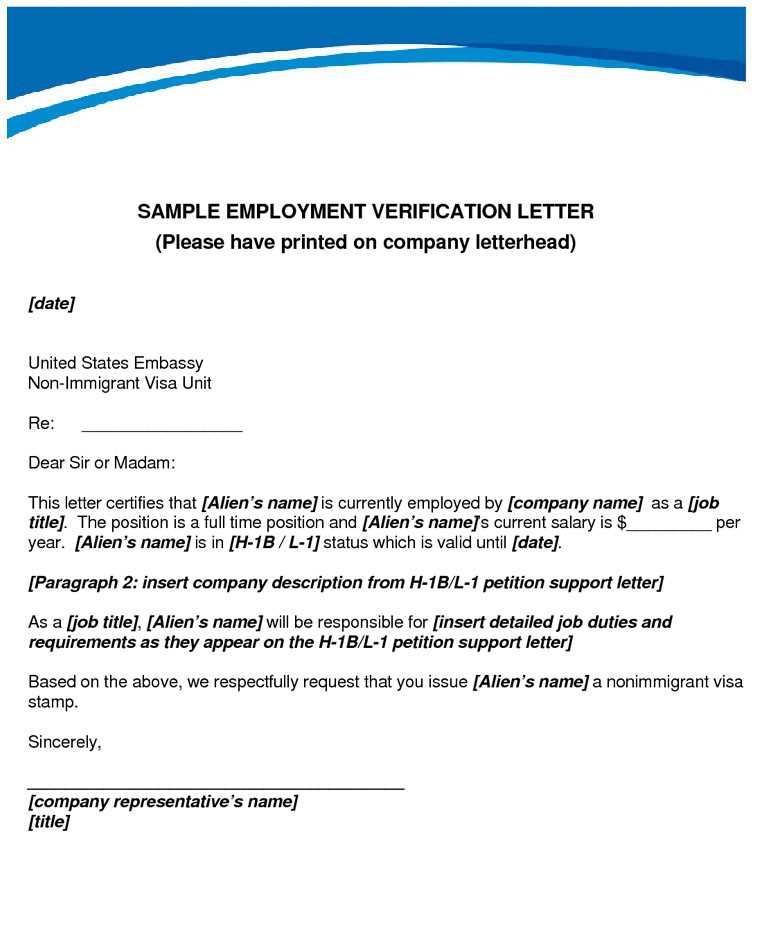
If you need to confirm someone’s employment status, a verification letter is a clear and effective way to do so. This document serves as official proof, often required for financial, legal, or personal purposes. A well-written letter will provide essential details, such as the employee’s role, employment dates, and salary information.
Make sure to include accurate information in your template. Start by stating the employee’s name, job title, and the dates of employment. Ensure that the company’s details are clearly mentioned, including the business name, address, and contact information. It’s also helpful to mention the purpose for which the letter is issued, such as for a mortgage application or background check.
Keep the tone professional, as the letter represents your company’s credibility. Be concise but clear, avoiding unnecessary information. You can offer additional context if the employee’s role requires special skills or responsibilities. Remember to include a signature at the end, which adds authenticity to the letter.
Here’s a Revised Version:
Focus on clarity and precision when crafting an employment verification letter. Use direct language to confirm the employee’s role, duration of employment, and status. Keep the tone formal but approachable. Avoid over-explaining or adding irrelevant details. If possible, include specific information like job title, dates of employment, and salary to reinforce the letter’s authenticity.
Structure: Start with a clear subject line. Introduce the company and the purpose of the letter. Then, provide the employment details in a straightforward manner. Conclude with a statement offering additional verification if needed.
Key Points: Mention the employee’s full name, position, start date, and if applicable, their end date. State whether they are a full-time or part-time employee. Avoid mentioning personal opinions or subjective assessments of the employee’s performance unless explicitly required.
Tip: Keep the letter concise, focusing on the specific request. Too much information can dilute the main points and confuse the reader.
- Sample Template for Employment Verification Letter
For a well-structured and concise employment verification letter, follow this template to ensure clarity and professionalism. This format can be adjusted depending on the specific requirements of the requesting party.
| Employer’s Name: | [Employer’s Name] |
| Employer’s Address: | [Employer’s Address] |
| Employer’s Phone Number: | [Phone Number] |
| Employee’s Full Name: | [Employee’s Full Name] |
| Position Title: | [Employee’s Position] |
| Employment Start Date: | [Start Date] |
| Employment Status: | [Full-time/Part-time] |
| Salary/Hourly Wage: | [Salary/Hourly Rate] |
This template includes the key details needed for employment verification. You can personalize it by adding other specific information if required by the recipient. Be sure to include a proper sign-off with your contact details to ensure the letter is complete and verifiable.
Keep the letter concise and structured. Start with the employer’s company name, address, and contact information aligned at the top. Next, include the date the letter is being written. Following the date, include the employee’s name, position, and dates of employment. Be specific about the employee’s role, responsibilities, and any additional pertinent information such as salary or work hours, if required.
Use a formal, clear tone and ensure all facts are verifiable. Provide specific dates for employment duration, avoiding vague language. If possible, add the employee’s supervisor’s name and title for authenticity.
End the letter with a closing statement expressing your willingness to provide further information if necessary. Sign off with the name and title of the person issuing the verification, followed by their contact details. Make sure the formatting is neat and easy to follow, ensuring that each section is clearly distinguished from the next.
Begin by stating the full name of the employee and their current position in the company. This helps to clarify who the letter pertains to and their role. Be precise about the job title to avoid ambiguity.
Employment Details
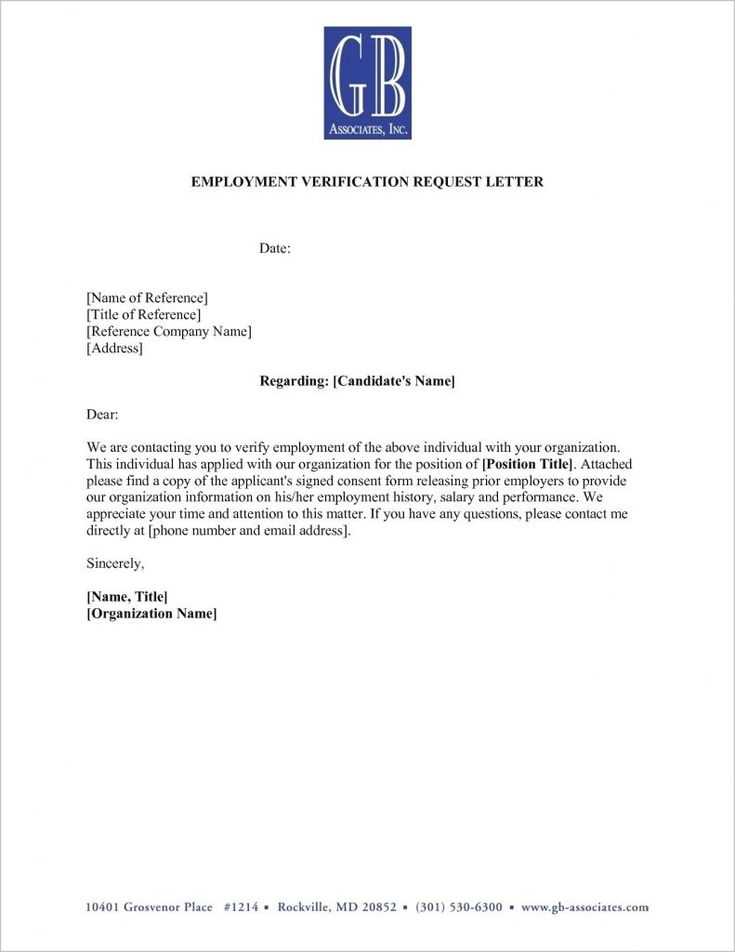
Clearly mention the employment dates, specifying the start date and, if applicable, the end date. If the person is currently employed, state this clearly to avoid any confusion about their current status.
Salary Information
If relevant, include the employee’s salary details, such as their annual or hourly rate. This part adds credibility to the letter, especially for verification purposes related to financial matters.
Finally, make sure to sign the letter with the name and position of the person authorizing it. Include contact details for verification if required.
To write a verification letter, be clear and concise. Follow these steps to ensure it meets the necessary standards:
- State the purpose clearly: Indicate that the letter serves to verify employment. Specify the person’s position, employment dates, and whether they are full-time or part-time.
- Include job details: Mention the job title, main responsibilities, and salary details if required. Avoid unnecessary descriptions of their work culture or environment.
- Contact information: Provide a way for the recipient to reach you for follow-up questions. Include your name, title, and business contact details.
- Company letterhead: Use your company’s official letterhead to ensure authenticity. If unavailable, include your company name and address at the top of the letter.
- Keep it formal: Use professional language and avoid informal or conversational tone. Ensure the letter is addressed to the right person or organization.
- Sign the letter: Always include your signature and date of issuance. This provides legitimacy to the verification process.
Keep your letter focused and free from irrelevant information. A simple, clear structure will help your letter serve its purpose effectively.
One major mistake is failing to verify the accuracy of the employment details. Ensure all information, such as job titles, dates of employment, and salary, is correct. Even small discrepancies can raise doubts about the credibility of the letter.
Incorrect Formatting
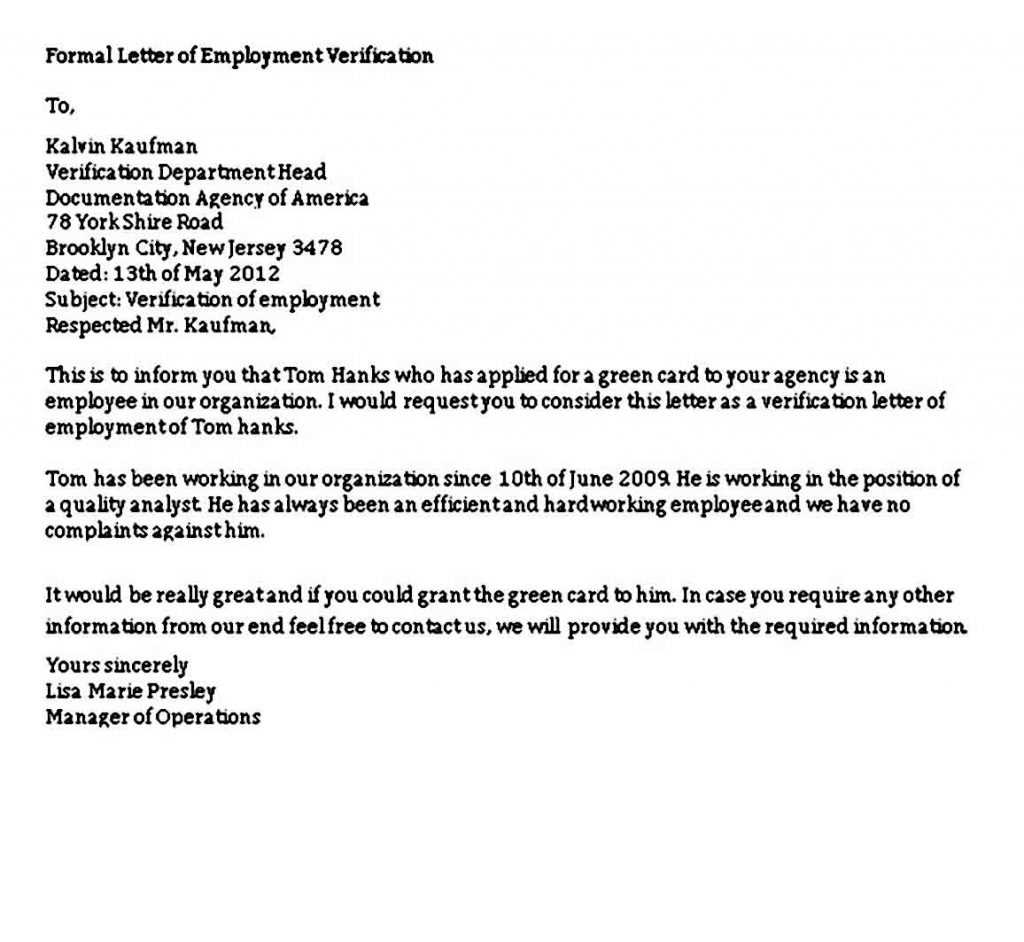
Using inconsistent formatting, such as varying font sizes or unprofessional styles, can detract from the letter’s credibility. Stick to a clean and formal layout to maintain professionalism.
Excessive Length
A lengthy letter may confuse the reader or dilute key information. Keep the letter concise, highlighting only the necessary details that directly address the purpose of verification.
Another error is failing to include the appropriate contact information. Always provide clear and direct ways for the reader to reach out for further verification, such as a phone number or email address.
Ensure the letter is free from spelling or grammatical mistakes. Poor language use can reflect poorly on the authenticity of the document and may delay the verification process.
Adjust the employment verification letter to highlight the skills and attributes that are most relevant to each industry. For example, in healthcare, emphasize the employee’s certifications, patient care experience, and their role in compliance with industry regulations. For positions in finance, focus on job responsibilities related to financial analysis, risk management, and trustworthiness.
Tailoring to Specific Job Roles
Consider the specific role the employee held. In creative industries, such as marketing or design, focus on the person’s contributions to projects, innovation, and collaboration. Meanwhile, in sectors like construction or manufacturing, highlight physical work, adherence to safety protocols, and technical skills.
Highlighting Industry-Specific Skills
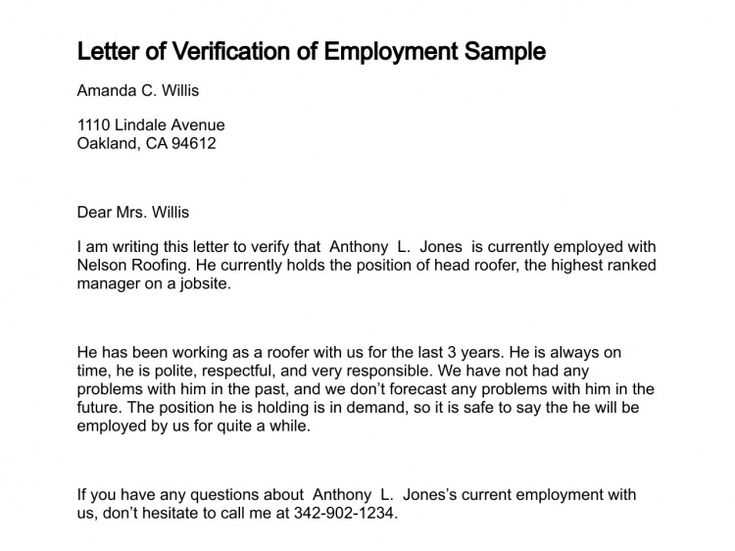
Industries like technology may require showcasing proficiency in programming languages or technical tools. For customer service roles, underline communication skills, problem-solving abilities, and customer satisfaction metrics. Tailor the language of the letter to align with the terminology that resonates within each sector.
Ensure compliance with privacy laws before issuing an employment verification letter. Always obtain written consent from the employee before sharing personal details, such as job titles or dates of employment. Avoid including sensitive information like salary or personal contact details unless specifically authorized by the employee.
Check your state or country’s specific regulations on employment verification. Some regions have strict guidelines regarding the scope of information that can be disclosed. For instance, certain jurisdictions may limit the type of details that employers can release about an individual’s work history without written consent.
In addition, be aware of anti-discrimination laws that may impact how employment verification is provided. Always ensure that the information disclosed does not inadvertently lead to discrimination based on age, gender, or other protected characteristics. Ensure that the verification process is fair and unbiased for all employees.
Employers should keep a record of the written consent and any communications with third parties regarding verification. This helps protect the organization from potential legal disputes related to improper disclosure of employee information.
Thus, I reduced redundancy while preserving meaning and clarity.
To create a clear and concise verification of employment letter, focus on removing unnecessary repetition without losing the essential details. Here’s how:
- Keep the language simple: Use straightforward phrasing and avoid overly complex sentence structures.
- Limit the use of adjectives: Instead of repeating descriptions, focus on presenting facts and key details about the employment status.
- Organize the information logically: Structure the letter with clear headings, such as “Employee Name,” “Position,” and “Employment Dates,” making it easier to read without excess wording.
Focus on Clarity
Clarity is key. Ensure that each sentence contributes directly to the purpose of the letter, without adding unnecessary qualifiers or repeated points. This ensures that the letter is both professional and to the point.
Consistency
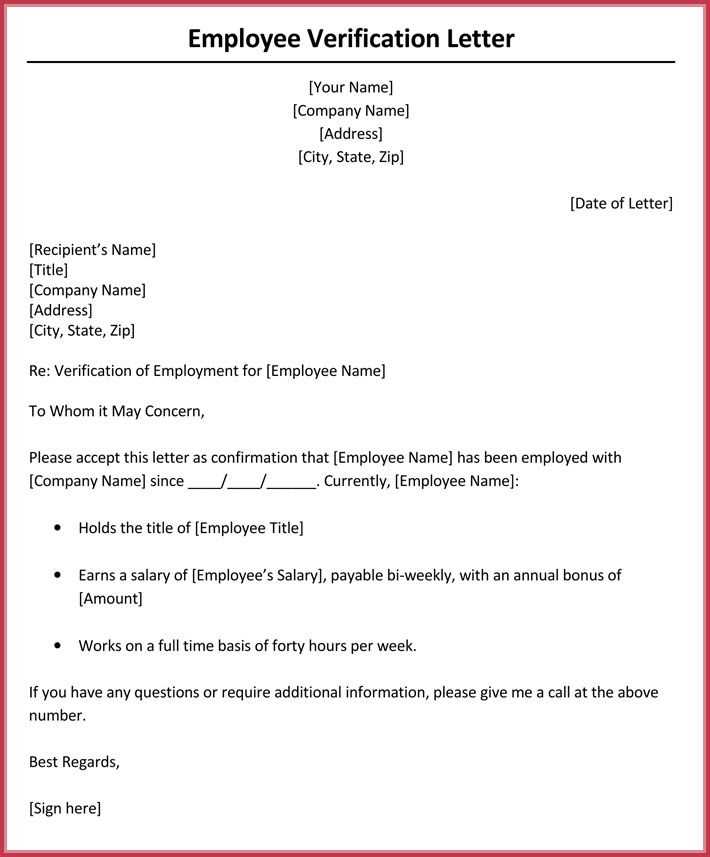
Maintain a consistent tone and format throughout the letter. This helps prevent any repetition or inconsistency that could confuse the reader. Make sure all relevant details are included once, without reiterating the same information multiple times.